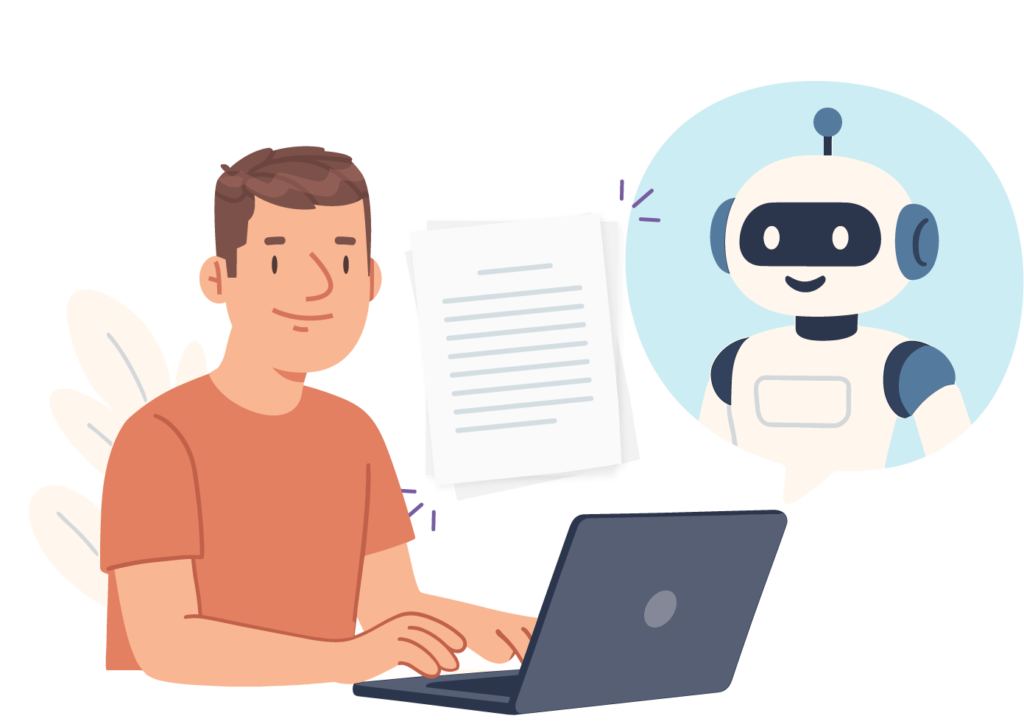Human vs Machine: What AI Still Can’t Do in B2B Sales
Estimated reading time: 4 minutes
AI in B2B sales is no longer optional. Your teams know it. Your board wants a strategy. And the tools are evolving fast.
From predictive lead scoring to auto-generated outreach, AI in B2B sales is promising scale without compromise. For SDRs, that means the pressure is on. Automation can now reach thousands in a day, generate copy that feels human, and run outbound sequences without taking a break.
But in the middle of the noise, there’s a question we think needs more attention: Where does the human touch still matter in AI-led sales development?
AI in B2B sales is rewriting the playbook – but it’s not replacing the players. Especially not in enterprise deals, where decisions are complex, cycles are long, and trust is everything.
The shift we’re all feeling
The speed of change is real. Generative AI, behavioural data platforms, email coaching tools – they’re all reshaping how sales teams operate. Used well, AI in B2B sales has the power to scale prospecting and eliminate wasted effort. Used blindly, it risks flooding inboxes with content that gets ignored.
So how do you strike the balance?
What AI can do well
Let’s give credit where it’s due. AI in B2B sales has changed the game in several ways:
- Speed & scale: AI can generate outbound messages, run A/B tests, and identify patterns at volumes humans simply can’t. Tools like ChatGPT for copy, Lavender for performance coaching, and Regie.ai for campaign automation are now embedded in modern SDR workflows.
- Data crunching: Platforms like 6sense and Apollo.io give commercial teams real-time insight into buyer intent, helping prioritise the right accounts at the right moment.
- Consistency: AI doesn’t skip steps. It follows process without fatigue, making it ideal for volume-heavy prospecting.
For high-volume, low-complexity outreach, AI in B2B sales delivers. And as a modern SDR outsourcing provider, we use that technology ourselves. We’d be behind the curve if we didn’t.
What AI can’t replace
But B2B sales isn’t just about speed. It’s about connection. The SDR role is often the first human interaction in a complex buying journey. And that interaction still matters (a lot). Despite the rise of automation, we consistently see:
- Responses to context-rich, truly personalised outreach outperform the generic.
- Human SDRs pick up on subtle signals that AI misses: hesitation in a response, a strategic comment hidden in an objection, a tone that invites a deeper question.
- Deals progress faster when rapport is real – not just inserted through a {firstName} token. And let’s be honest: buyers are already filtering out low-effort messaging.
AI in B2B sales can get you into the inbox. But it can’t create curiosity, trust or urgency. That’s still a human job.
Human copy vs AI
The more automated sales become, the more buyers value authenticity.
We’re not anti-AI. In fact, the most effective SDR operations are AI-powered and human-led. That’s how we work at durhamlane – combining the best tools with expert people who know how to turn interest into opportunity.
The real question isn’t “Human copy or AI?” It’s: How do we build an outreach model where AI in B2B sales amplifies the human touch, not replaces it?

What this means for commercial leaders
If you’re a CRO, CMO, or Commercial Director under pressure to scale efficiently, here’s our take:
- Use AI in B2B sales to do the heavy lifting: lead scoring, data gathering, first-draft writing, process execution.
- Let your people focus on value-rich conversations (the ones that convert).
- Stop treating SDR as a volume engine. Start seeing it as a strategic function that deserves intelligent investment.
This isn’t about choosing sides. It’s about designing a system where tech handles the tasks, and humans deliver the trust.
Final thought
AI is fast. But fast isn’t always right.
In B2B enterprise sales, where every interaction counts, trust is still your biggest differentiator. And that trust is built person-to-person (not tool-to-inbox).
AI in B2B sales can open the door. But only a human can walk through it – and build the relationship that moves a deal forward.
AI does the reach. Humans build the relationships. Want a sales engine that delivers both?
